What did commemoration of the dead look like in Medieval Livonia and how did memoria shape group identities in the region? Dr. Gustavs Strenga shares insights into his research and parallels with modern-day memory wars.
Baltic Ways is a podcast brought to you by the Association for the Advancement of Baltic Studies, produced in partnership with the Baltic Initiative at the Foreign Policy Research Institute. The views and opinions expressed in this podcast are those of the authors and do not necessarily reflect the official policy or position of AABS or FPRI.
Read more:
Remembering the Dead: Collective Memory and Commemoration in Late Medieval Livonia
Transcript
Indra Ekmanis: Hello, and welcome to Baltic Ways, a podcast bringing you interviews and insights from the world of Baltic studies.
I'm your host Indra Ekmanis, and today we're speaking with Gustavs Strenga, senior researcher at the Institute of Arts and Cultural Studies at the Latvian Academy of Culture and recently a postdoctoral researcher at the University of In Germany. Today, he speaks with us about his recent book, Remembering the Dead: Collective Memory and Commemoration in Late Medieval Livonia, and what parallels that might have for us today in the modern Baltic states. Stay tuned.
Dr. Gustavs Strenga, thank you so much for joining us on Baltic Ways. Perhaps we can start, you can tell us a little bit about your background and how you came into this field of study.
Gustavs Strenga: First of all, thank you for inviting me. Well, my background is I'm Latvian. I was born in Riga and I began my studies in Riga, in Latvia, and I studied history at the University of Latvia. And since high school, I had an interest in the history of the Catholic Church, partially because I went to a Catholic school. And during my studies, when I began studying at the end of the last century, beginning of this century, I understood that I'm interested into medieval history. I wrote my bachelor thesis and also later my MA about Dominicans. It's a mendicant order founded in the 13th century and they also had their priories in the Baltics, like in Riga and Tallinn. I spent, during my studies, a year in Lublin at the Catholic University of Lublin. I had a wonderful Erasmus semester in Kiel, in Germany. And I really understood that I want to do medieval history. In Riga, I had really two good professors who were teaching medieval history, but I understood that it's not enough, so I went to Budapest, the Central European University now located in Vienna, and I studied medieval studies there.
And later, I had a chance to study at the University of Queen Mary in London, and I was supervised by Mary Rubin. And there, my interest in medieval commemoration began.
And during my studies in London — it was a wonderful time — but I had a problem. I didn't have funding. So I moved to Germany to the University of Freiburg where I was writing — continuing writing my doctoral thesis on medieval commemoration and memory in Livonia. And after that, I had a chance to work at the National Library of Latvia, and also very exciting and interesting postdoctoral projects at the universities of Tallinn and Greifswald.
IE: Wonderful. So that's interesting that your early experience in a Catholic school has brought you all the way into studying commemoration in medieval Livonia. Thanks. Thank you for sharing that.
So, as I mentioned, you are the author of Remembering the Dead: Collective Memory and Commemoration in Late Medieval Livonia, which came out in November of 2023 and was also awarded the Association for the Advancement of Baltic Studies book publication subvention.
It's also one of two recent monographs by Latvian historians to really be published internationally. And our colleague Una Bergmane, who also recently spoke on this podcast, published, published the other. The book examines the practices of remembering, and how those practices have influenced or had their impact on medieval Livonia, now modern day Latvia and Estonia. But I wonder if you can tell us a little bit more about that book. I gather it comes from your doctoral research — tell us a little bit more about the research that informs that work.
GS: Yes, so this book, as you said, is a transformed version of my doctoral dissertation, which had a bit different title, and which I defended in 2013. And, after I finished writing the thesis, I understood, yes, I want to transform it into a book, but maybe with a bit different structure, so it took me quite a lot of time to restructure it.
Though medieval commemoration of the dead had, of course, religious aims — for example, to lessen the suffering of the deceased in purgatory — I wanted to pursue the idea that the medieval commemoration of the dead was both a form of collective memory and also a social practice. As a form of collective memory, it created group self awareness of the past and thus shaped their identities.
As a social practice, it created bonds between individuals and groups, and also between living and dead. I can demonstrate that by saying, for example, if someone in the Middle Ages wanted to be commemorated, the person had to have resources.
IE: Yeah.
GS: And resources could have been donated to a particular institution, and this institution — for example, a friary, a monastery, or a nunnery, or even a parish Church — this institution would, for example, say to some priests, you have to pray or celebrate the service, and you have to pray for a certain person. So it's a, basically it's a kind of an economy of gift exchange.
IE: Yeah.
GS: You're giving resources to someone to commemorate you. In my book I was looking more on groups. I was interested not so much into commemoration of individuals, because lots of research has been done in the field. For example, if some of the listeners are interested, you can look up the books on medieval memorial culture. I — rather, I was interested in that, how through the commemoration of the dead, groups were remembering their past. And this is, this is something maybe a bit different, just, looking at medieval memorial culture.
Thus, in my book, I'm featuring several such groups. For example, the Church of Riga, which means the Cathedral chapter and the bishops, later archbishops. The Livonian branch of the Teutonic Order, different urban guilds and brotherhoods in Livonian cities like Riga and Tallinn. And I also was interested in — how did the collective memory shape relationships between these groups, particularly I was interested in the conflicts.
IE: Mm hmm.
GS: And in the case of my research, it's definitely influenced by the surviving sources. For example, in the book, you cannot read anything about how peasants were remembering the past in the Middle Ages through the commemoration of the dead, because yes, you have, you have archaeological material, but you don't have other kinds of sources, which would give some kind of a background information.
Also, medieval artisan groups are not much represented. So it's a bit of — I would say it's a collection of case studies. My colleague, Marek Tamm, also partially criticized me of that, but I was interested really in the cases of the research, less perhaps painting this large landscape picture of the medieval commemoration in medieval Livonia, because I thought that's difficult to do because not many sources survive.
As we know Livonia later, after the Middle Ages was a battleground between several large regional powers and many archives had burned down. And also lots of the churches have been destroyed. Also during the Reformation, altars, murals, other things involved in the commemoration of the dead have been destroyed.
So, yes, it's, let's say, it's a collection of case studies looking at certain groups and how they were remembering their past in the long term.
IE: Yeah, I'd like to ask you to, to talk about, a case study or two, but I wonder if you can tell us a little bit more, especially for the non-historians or people who are not really looking always at material from, from the middle ages — how do you go about finding your source material? What does that look like?
GS: Particularly this research in this study, I was using all kinds of sources. Written sources. For example, you have testaments, last wills. Then you have chronicles. I was also using some books of different brotherhoods and guilds where, like, they were keeping their records and also recording how they are commemorating their dead.
You have documents written down. You have necrologies. These are like calendars where you're putting the names of the dead and you know when they should be commemorated. Liturgical manuscripts, for example, missals. And you also have other kinds of sources. You have material culture. You have chalices. You have altar pieces. You have objects, tokens given to the poor in order that they know that they, that they receive alms, that they should commemorate someone.
So, I was trying to use all kinds of sources. Also, last but not least, for example, the grave slabs, which are, some of them are surviving in the churches of former Livonia. So you have all kinds of sources, and I think this is what makes the study of commemoration interesting, that you can combine them. You're not just using written material, but you're trying to look on memory as something that was kept not only in one kind of media, but in numerous kinds of media.
IE: Yeah. Yeah. Thank you. Yeah. In the book, I think you go into a variety of different kind of contexts, looking at elites, non elites, as you mentioned, urban and rural sort of practices, liturgical, non liturgical. We'd love to hear your thoughts on one or two of those case studies.
GS: Yes, I think this book has several interesting case studies. I would just introduce a few of them. In most cases, the groups in the Middle Ages were, in fact, interested a lot in remembering their beginnings. Into remembering their origins.
As most of the listeners would know, medieval Livonia was Christianized quite late. The Christianization process began only in the late 12th, early 13th century, when the missionaries and crusaders from northern Germany and Scandinavia arrived in the eastern Baltic, which we now know today as Latvia and Estonia. And it is the time when the history of two, let's say, most important institutions in the region begin, and this is the history of the Riga Church, particularly the Cathedral chapter, and the history of the Livonian branch of the Teutonic Order, and these groups in the late Middle Ages were looking back at their beginnings, and these events which took place in the late 12th and early 13th century were important for them. And also not just events, but also the dead of that age.
We can say the collective memory of the Riga Cathedral chapter and Riga bishops, was not just carried by the famous and very well known text the Livonian and Chronicle of Henry, which was written around 1227, but also by Riga Cathedral itself. Riga, as a city, was founded in 1201, and then in 1211,the founder of the city, Bishop Albert, began constructing the cathedral.
What do I mean, the Cathedral and its choir was memory itself — the space was the commemorative space? Before the city of Riga was founded, Livonia already had two dead bishops. The first bishop, the first missionary, Meinhard, and the second bishop, Bertolt, who was killed in a battle in 1198, just three years before the foundation of Riga.
For every community in the Middle Ages, the founders were very important for their memory. So around 1229 when Bishop Albert died, or 1230, the bodies of Meinhard and Bertol were transferred from Ikšķile or Üxküll where they were buried, to the new cathedral and buried in the choir. And so we could say that in the Middle Ages, they were not just reading a chronicle, this one, for example, the Chronicle of Henry, or commemorating bishops liturgically, but also they were in contact with the graves, with the places where the bishops were buried. So it was both. A phenomenon of memory that was recorded in the texts and performed during the liturgy. And also, we can say it was a physical experience, because still, though historians are arguing about that — whether in the Middle Ages, the three founding bishops of Rīga's Church were considered to be saints — we can say that they were seen as a holy man. Maybe, yes, we can still argue about their sainthood because they were never canonized in the Middle Ages, but they were seen also as important founding figures.
In the case of the Teutonic Order, it is a bit different. Spaces — maybe if we are talking about this memory of the origins or memory of the beginning — spaces are maybe not so important. More, we have textual sources showing how the Teutonic Order's Livonian branch were commemorating their death. For example, the Livonian Rhymed Chronicle — text composed around 1290 — the text has numerous references to the brethren of the Teutonic Order who had been killed during the battles against the Baltic pagans during the 13th century. Later, it's very interesting, in 14th and 15th century, we can trace numerous necrologies of the Teutonic Order, not in Livonia, but nowadays Germany, Belgium, and Switzerland, where we can see the Teutonic Order were — that they were Commemorating those men, their own brethren, killed in distant Livonia.
Sometimes they were misspelling the name of Livonia. Most likely those people who were recording these records in the necrologies or commemorating these dead brethren, they didn't know where Livonia is, but still, this experience of crusading was part of the Teutonic Order's collective memory.
It's also interesting that in the later times, as I was saying about the commemorative culture of the Riga Cathedral, we have some evidence of the commemoration. For example, the Missal of Riga — the sole complete manuscript from the Middle Ages that gives us a glimpse into how liturgy in medieval Riga looked like. In this missile, we can also spot several instances where we can see the curation of the Riga archbishops. Their names have been recorded. And also, this is a time when there was a conflict between the Teutonic Order and the Cathedral Chapter of Riga. Because the Teutonic Order, during the late 15th century, wanted to take control over the Cathedral of Riga, and also over the cathedral chapter, and you can see the struggle also in the commemoration, because the records are telling us that these archbishops had died, during captivity into the Teutonic Order's prison, for example.
IE: Well, yeah, thank you for sharing those, those glimpses into those case studies.
And, you know, when I first thought about that topic of medieval Livonia, it wasn't totally clear to me how it drew to my own interest, but I was really drawn in, even by those first few paragraphs. You know, you talk about memoria as this form of collective memory and social practice that creates groups, that shapes identities, that helps remember the past, and creates those relationships.
And I was thinking about, how does that translate a little bit into today's society? You know, collective memory group identity still plays such an important role in our world, and so, I wonder — do you have any insights as to what, what your work might tell us about the Baltic nations today?
GS: It is indeed difficult to link medieval history with the contemporary world.
IE: Yeah.
GS: But, I would say that the commemoration of the dead is a phenomenon that shows that every group, in every historical period, is remembering their dead. So we can see the commemoration of the dead as a basic form of collective memory. And, if we look to the past, we can also see conflicts that have been created by different memories. And, today we are living into the age of memory wars in, in the Baltics.
IE: Yeah.
GS: Let's just remember, for example, the removal of the so-called Alyosha statue in Tallinn in 2007 and the riots which began afterwards and which were also supported by Russia in numerous ways, also by cyberattacks.
IE: Right.
GS: And also the removal of the monument to the Liberators of Soviet Latvia and from the German fascist invaders — now I'm just quoting the official name of that monument, which was removed in Riga in 2022. So these and also early examples show us that Baltics have experienced different practices of erasing memory.
IE: Yeah.
GS: Also, of trying to replace the memories. If we remember that during Soviet times in Latvia and also in Estonia, numerous monuments erected during the interwar period, for example, commemorating the independence wars against, against different forces, including Soviet Russia, those monuments were destroyed in the 1940s, 1950s in Latvia and Estonia. And afterwards, many of these monuments were restored by the movements.
IE: Yeah.
GS: So there we can see some kinds of parallels and this is quite similar to that, what I'm trying to show in my book, long term developments of commemoration and remembering.
IE: Yeah. The long tail and how, how it is, perpetually moving that collective identity. Um, maybe we can talk a little bit about your current project on Saints and Heroes: From Christianization to Nationalism. Can you tell us a little bit about that work, as well?
GS: Yes. In 2021, I had a chance, together with my colleague Cordelia Heß from the University of Greifswald to revisit the question of remembering in quite different settings. So, together with Cordelia Heß and also our partners from the State University of St. Petersburg in Russia, we created a project. It was a Russian-German co-project [financed by Deutsche Forschungs Gemeinschaft]. We were working on the medieval saints and medieval heroes in the Baltic Sea region and how they have been used and later abused after the medieval times.
Yes, and I have to say that when Russia's full scale invasion in Ukraine began, our cooperation was discontinued, though we continue working on our part, let's say, on our German part of the project.
IE: Yeah.
GS: The idea behind was really to look at these long term developments in remembering medieval figures. I can assume that many listeners know medieval heroes, for example, Joan Arc, or Emperor Barbarossa, or Charlemagne, or Scottish and Welsh rebels, William Wallace and Owen Glyndwyr, or Russian Prince and Saint Alexander Nevsky, who nowadays is abused by Putin's regime. And in the case of these all figures, you can see different ways how people have been remembering them and also using them, for example, much later in the 19th and 20th century for nation building or for creation of smaller groups. We have lots of examples — for example, in Scandinavia, that medieval saints in late 19th and early 20th century, played very important role in creating identity of Catholic groups in these countries, because let's remember that Scandinavia became Protestant after the Reformation, and then when there was this Catholic revival, many Swedish intellectuals were choosing St. Bridget as their patron and also revisiting the materials of the canonization process of St. Bridget and also living this medieval religious life during the late 19th and early 20th century.
Within the project, I was working on Baltic medieval heroes. That's, for example, the master of the Livonian branch of the Teutonic Order, Walter von Plettenberg, who was a Baltic German hero in the 19th century and also in the early 20th century. I was also working on Latvian medieval kings as heroes — for example, Viesturs and Namējs. As listeners would know, those were not real kings. During the 1920s and '30s in Latvia, they were called kings, but they were just leaders of the local ethnic groups. In the case of the Viesturs and Namējs, those were Semigallians. And I wrote an article, which has been recently published, on Liv warrior Imanta, who has been mentioned in medieval sources just once, in the Livonian Chronicle of Henry, in the scene where Imanta killed Bishop Bertold, who was mentioned in this podcast earlier.
And, it is, in fact, fascinating to see that in the Baltic case, not so much history writing has been important for the revival of these medieval heroes, but literature, poetry, and also drama. Those have been the main tools — in the case of Imanta, also one of the main tools has been music, a song, which has been composed at the beginning of the 20th century, using lyrics of Latvian poet Andres Pumpurs. And the result that can be read in the case of the project is a book called Doing Memory: Medieval Saints and Heroes and Their Afterlives in the Baltic Sea Region (19th–20th centuries), that has been recently published by De Gruyter. And there we have 10 contributions about different medieval saints and heroes from Scandinavia, from Northern Germany, and also Latvia, Estonia, and Finland.
IE: That is really interesting to see how arts, literature, music, theater come into play in rememberings, as well. We really appreciate you taking the time to speak with us and to share this glimpse into medieval history, medieval Livonia. The book grabbed me from the very beginning. So thank you so much, for your time and for sharing your thoughts with us.
GS: Thank you. It was a pleasure.
IE: Thank you for tuning in to Baltic Ways, a podcast from the Association for the Advancement of Baltic Studies produced in partnership with the Baltic Initiative at the Foreign Policy Research Institute. A note that the views and opinions expressed in this podcast are those of the authors and do not necessarily reflect the official policy or position of AABS or FPRI. I'm your host, Indra Ekmanis. Subscribe to our newsletters@aabs-balticstudies.org and FPRI.org/baltic-initiative for more from the world of Baltic Studies. Thanks for listening and see you next time.







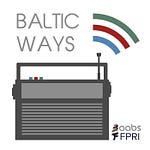
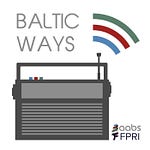
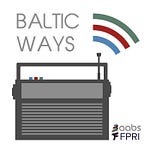
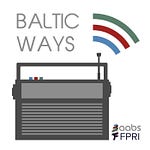
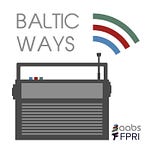
Dead, But Not Forgotten: Commemoration in Medieval Livonia